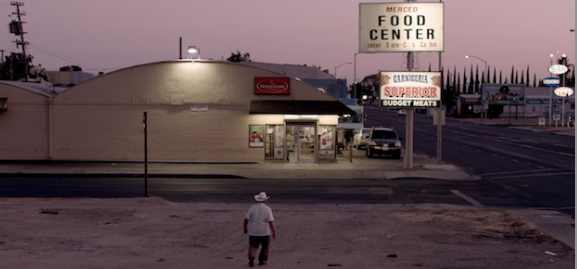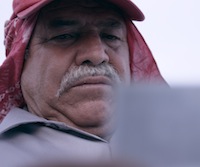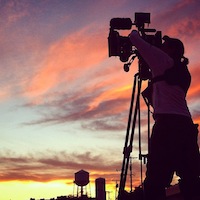Secrets To Getting Great Production Stills

Last month, we interviewed filmmaker Rodrigo Reyes about his experience shooting his film Lupe Under the Sun. (Reyes’s prior project Purgatorio premiered at the Los Angeles Film Festival, and is being released theatrically in Los Angeles today.) We couldn’t help but notice how great his production stills were—often filmmakers don’t have much to choose from and they’re not always the highest quality. Knowing how important good production stills are—just ask a unit publicist), we talked to Reyes and his DP Justin Chin about his secrets to getting those shots.
 Some of your production stills were portraits, some landscapes, and some showed filmmaking at work—did you set out to do that intentionally, and why?
Some of your production stills were portraits, some landscapes, and some showed filmmaking at work—did you set out to do that intentionally, and why?
Behind the scenes photos are interesting; it’s great to see what the shoot was like. But these pictures are incomplete without an actual still from the footage to give you an idea of where the creative process is headed. Ideally, every piece of footage captures the atmosphere and tone of the film; they help people begin to relate to the spirit of the larger whole.
Even though Lupe Under the Sun was a micro-budget production, DP Justin Chin and I fought very hard to bring this feeling to every single take. It’s a film all about the rhythms and spaces of life in this character, and that’s why it makes sense to share a small piece of the footage. In essence, taking interesting stills has a lot to do with shooting interesting footage.
Also, I think that many filmmakers overlook the fact that when working on an economy of means, what you need most is collaborators, people who are passionate about your project because they sense your own drive and commitment. And stills are one of the key ways to start reaching out and creating connections after you have shot the film and get ready to face the steep hill of post-production.
On top of all this, if your film had a shoot worth sharing, stills are the best way to get that conversation going.
 Did you have a production photographer, and did hiring one have a major impact on your budget?
Did you have a production photographer, and did hiring one have a major impact on your budget?
A local journalist visited the shoot on one occasion, and early on some of the PAs took photographs. However, we were working under so much pressure that we soon bypassed this role. It just wasn’t possible to designate somebody to do photographs on a shoestring, neorealist film. However, I encouraged everyone to take pictures if they wanted to with their cell phones, without breaking the heavy work rhythm. I actually like the combination of these candid, lower-quality images with the beautiful stills taken from the 4K footage. The behind-the-scenes images do not have to be pristine; they just have to give others a feel for what you were up to.
What are some “do’s” and “don’ts” of taking production stills?
Speaking from the experience of Lupe, I would say that budget and workflow are key things to consider. If your budget is as limited as ours was, perhaps you can invite a photographer to visit the set once or twice as a favor to the film. Or you can let your AC and Line Producer take a few stills, as well as taking some yourself. I think it all depends on your specific work model for the film at hand. The last thing you want to do is get in the way of making the actual film, and the way to avoid this is by finding the right moments to do photographs and be flexible about your approach. An iPhone works just fine if you put some thought behind it.
How did you plan for taking your production photos without interfering with the flow of production?
For the photos that I took, I would think of an angle I liked and wait until I had a slight pause in my responsibilities. I didn’t spend much time on composition, I allowed them to be fast and candid so that I could get right back to work as soon as I could. Everyone who was taking photos followed the same approach. The crucial point to remember is that behind-the-scenes stills are only as good as what actually makes it to the screen.
Mary Sollosi / Film Independent Blogger
